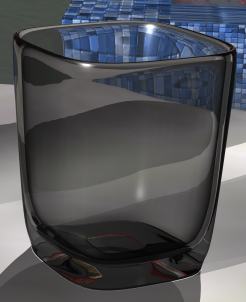Refractive and Reflective Transparency
When light rays hit a transparent surface like glass or water, a fraction of the ray is reflected and the rest passes through the material. The transmitted ray is refracted according to the material's properties (refraction index).
